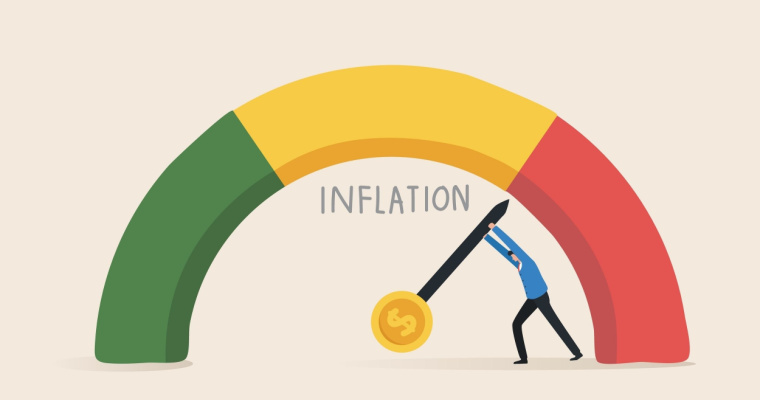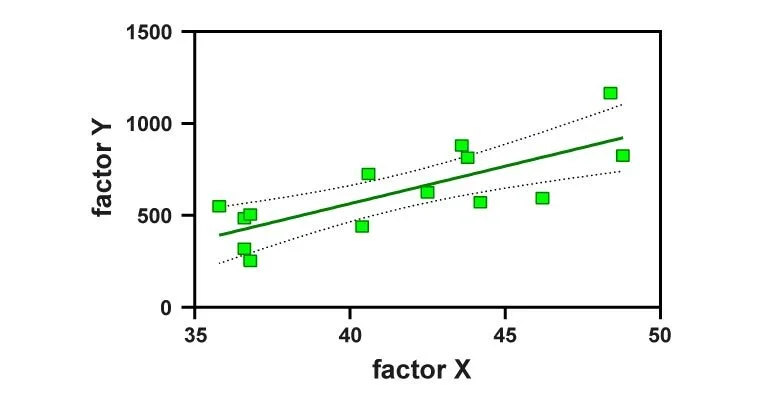What is Factoring and its Importance in Financial Management?

Factoring is a practice in which a company buys the accounts receivable of another company at a discounted rate. Accounts receivable are the invoices/payments that are owed to a business. In this scenario, when a seller raises an invoice to a customer, the factoring company (also known as the factor) pays the seller a major chunk of the invoice immediately on behalf of the customer. This is usually close to 70% and 80% of the invoice value. The rest of the money owed to the seller is paid once the customer has made the payment. The residual amount after removing the operational charges of the factoring company is paid to the business.
Before going ahead lets understand how factoring works.
How Does Factoring Work?
Factoring involves three main players – the seller, the buyer, and the factoring company or factor. It is a form of supplier financing that aids small businesses in eliminating the issues caused by slow-paying and high-risk customers. By acting as an intermediary in financing a seller’s invoices, the factor solves issues related to the seller’s working capital.
To understand how factoring works, let us consider an example – An individual seller, Rahul, manufactures chairs. His chairs are sold to several retail outlets in the city. Every month Rahul sells these chairs to his clients and raises an invoice for the same. Let this amount be Rs 1,00,000 per month per client. The clients are to pay the expenses by the period stipulated in the invoice.
Now, given that this is a single-owner business, Rahul can only buy the raw materials to make the next batch of chairs after receiving the payment from his clients. But the clients will only pay as per their contractual obligation. Also, an unexpected delay in payment from the clients will further set Rahul back by several lakh rupees and valuable business hours. Here is where a factoring company steps in.
The factoring company is a third-party financial entity which extends exactly what Rahul needs here – money and risk absorption capacity. The factoring company steps in and tells Rahul that they are ready to pay the amount owed to him by his clients after subtracting their operational charges of Rs 10,000.
So now, Rahul receives Rs 80,0000 soon after he has raised the invoice.
Next, the Rs 1,00,00 owed by the client is paid to the factoring company. The factoring company, after deducting the Rs 10,000 (operational charges), pays the leftover amount of Rs 10,000 to Rahul. In case of client delays, the factor contacts them and receives updates.
This allows Rahul to continue working on his business without a long-drawn shortage of funds and the hassle of following up on the payments due to him.
Also Read
What are the Characteristics of Factoring?
1. Timeframe
The time frame attached to factoring can vary with each company. Usually, the period for factoring is 90 to 150 days. This period can be further extended depending on the company and the financial scenario. The terms and conditions of a factoring company can vary depending on the businesses as well the factor’s own internal practices.
2. Supports Small Businesses
Factoring as a practice caters predominantly to small businesses as they tend to require support with regard to cash flow.
3. Flexible
Indian factoring companies extend services for invoices as low as Rs 1,000. It is also more feasible when compared to obtaining a bank loan which requires investors to meet various eligibility criteria and can involve complicated paperwork.
Types of Factoring
There are various types of factoring available to businesses. The idea is to be associated with a factoring mechanism that best suits your needs.
1. Disclosed Factoring
In this type of factoring, the factor’s name is specified in the seller’s invoices. The clients are required to pay the stipulated sum to the factor.
2. Undisclosed Factoring
Undisclosed factoring is the antithesis of disclosed factoring. As the name suggests, the factor’s involvement is not revealed in the seller’s invoices. So the funds are disbursed in the name of the seller. But the fund management and collection controls remain with the factor.
3. Recourse Factoring
In recourse factoring the seller bears the risk associated with the possible non-payment of funds. So, if the client does not pay the bills, the seller will have to repurchase the invoice from the factor. As a result, the factor is protected from risk.
4. Non-Recourse Factoring
In contrast to recourse factoring, this type of factoring involves the factoring company having to assume the risk of the customer not making the payments. If the customer does not pay the invoice, the factoring company is responsible for collecting the payment from the customer or absorbing the loss. It is usually used in scenarios where the seller is dealing with clients with questionable creditworthiness.
Benefits of Factoring
1. Guaranteed Cash Flow
Factoring is useful for businesses as it promises a steady supply of cash by removing the time-bound dependency of sellers on their clients. As a result, sellers/manufacturers can keep the operational cycling functioning without roadblocks.
2. Ease of Operations
Factoring companies ease the amount of operational pressure on businesses by taking care of the fund collection process from various clients.
3. Risk Mitigation
It eases the risk on businesses, allowing them to use their funds and time in the best possible way. Moreover, depending on the type of risk tolerance, you can also choose between the various types of factoring models.
4. Improves Creditworthiness
Factoring is useful for small businesses as it helps to improve creditworthiness. This is an important parameter that can be leveraged by companies for future financial requirements.
5. Reduces Dependence on Banks
It reduces the dependency of businesses on banks. Unlike banking setups which involve paperwork and strict eligibility criteria, factoring is an easier financial process. Additionally, the need for collateral is not present in the factoring.
Also Read
Limitations of Factoring
1. Expensive
Factoring can be an expensive proposition because factoring companies take up much of the risk associated with the payment of invoices and pay the seller upfront. It also does not demand collateral from the seller. As a result, the fees attached to the factor can be high and, in several cases, are higher than bank charges.
2. Selective
Given the rate of risk absorption they engage in, some factoring firms can be extremely selective when it comes to who they extend their services to due to which not many can enjoy the benefits of it. The risk is also amplified because of slow-paying clients.
3. Loss is Possible
You may be paying a significant chunk of your profits to the factoring company as operational charges but loss is not completely striked out. This can be a tricky financial position to be in if you have a series of low-output months.
What is Invoice Discounting?
Invoice discounting is a financial model in which a business puts up a company’s accounts receivable as collateral in exchange for a loan. This loan is issued by a finance company, and it is usually a very short loan period. As a rule, the loan amount disbursed is lower than the total amount of invoices raised.
Difference Between Factoring and Invoice Discounting
While factoring and investment discounting may sound similar, they are quite different from one another.
| Factoring | Invoice Discounting |
| Factoring involves a business, a factor, and client/customer, | Investment discounting entails a drawer, drawee, and payee. |
| Here, in most cases it is the factoring firm that handles all the collection and communication requirements on the seller’s behalf. | Invoice discounting is largely a confidential arrangement where only the seller and the lending firm are aware of the arrangement. |
| Factoring may involve a factoring company absorbing the risk and the losses in case a bill is not paid by the client | No such flexibility is extended in the case of invoice discounting, it doesn’t involve any other company. |
Final Word
With factoring, sellers have more autonomy over their operation cycle and do not have to depend entirely on the payments of customers to plan their workflow. It also transfers much of the risk from the business to the factoring company. Additionally, the responsibility of communicating with customers about the invoices and collecting the payments is also taken up by the factoring company. However, there are also limitations, such as high costs and unexpected risk absorption associated with factoring companies.
FAQs
Ans. Factoring is largely associated with small businesses, which need a constant flow of cash to keep their operations running.
Ans. Factoring companies charge their clients an operational fee. This fee can vary based on the type of factoring model and factoring company.
Ans. Factoring companies do not demand any collateral as they purchase your invoices at a discount and do not provide you with a loan.
Ans. Disclosed factoring is the model in which the involvement of factors is made known to all parties.
Ans. The period of factoring usually extends from 90 to 150 days. In some cases, companies can extend this period beyond 150 days.
Disclaimer
This article is solely for educational purposes. Navi doesn't take any responsibility for the information or claims made in the blog.

Customer’s Feedback
No comments found.What is Primary Deficit? – Example, Formula & Measures
What is a Primary Deficit? Primary Deficit is the difference between the current year’s fiscal... Read More »What is Financial Ratio Analysis? – Objectives, Types and Uses
Ratio analysis is a process that allows people to assess the financial health of a company. Using t... Read More »Treasury Management – Its Functions, Types and Benefits
Even the most well-funded business can run into huge losses if it does not have the resources to fu... Read More »How Anti Money Laundering Combats Financial Crime?
Anti Money Laundering (AML) is a system of rules, laws, regulations, and procedures that financial ... Read More »What is Salvage Value and Why is it Useful?
Salvage value, also called scrap value, is the value of a specific asset after its useful life. In ... Read More »Key Difference Between Factoring and Forfaiting in Trade Finance
Factoring and forfaiting have grown in prominence as major sources of export financing. For the uni... Read More »What is Budget Surplus: Its Effects, Advantages and Impact with Examples
When the revenue of a government, business, or individual exceeds its expenses in a given period, i... Read More »What is Balanced Budget – Components, Importance and Examples
In financial planning or the budgeting process, a balanced budget is one in which total anticipated... Read More »What Does Inflationary Gap Mean in Macroeconomics?
In macroeconomics, the difference between current and potential GDP is known as a gap. This gap is ... Read More »What is Accounting Conservatism in Finance and How Does it Work?
Accounting conservatism involves a conservative set of accounting guidelines wherein the worst-case... Read More »Multiple Linear Regression (MLP) – Uses, Formula and Examples
Various statistical models help in establishing a relationship between different variables. Multipl... Read More »What is Debt Funding and Why Should You Choose it?
A business can raise funds by borrowing through debt funding. Although debt can take many different... Read More »Top 10 Chit Fund Schemes in India in 2023
Chit funds are one of the most popular return-generating saving schemes in India. It is a financial... Read More »10 Best Gold ETFs in India to Invest in April 2023
Gold ETFs or Gold Exchange Traded Funds are passively managed funds that track the price of physica... Read More »10 Best Demat Accounts in India for Beginners in 2023
Creation of Demat accounts revolutionised the way trades were conducted at the stock exchanges. It... Read More »20 Best Index Funds to Invest in India in April 2023
What is an Index Fund? An index fund is a type of mutual fund or exchange-traded fund (ETF) that... Read More »Best Arbitrage Mutual Funds to Invest in India in April 2023
Arbitrage funds are hybrid mutual fund schemes that aim to make low-risk profits by buying and sell... Read More »10 Best SIP Plans in India to Invest in April 2023
What is SIP? SIP or Systematic Investment Plan is a method of investing a fixed amount in ... Read More »10 Best Corporate Bond Funds in India to Invest in April 2023
Corporate bond funds are debt funds that invest at least 80% of the investment corpus in companies ... Read More »10 Best Bank for Savings Account in India [Highest Interest Rate 2023]
Savings account is a type of financial instrument offered by several banks. It lets you safely depo... Read More »


































